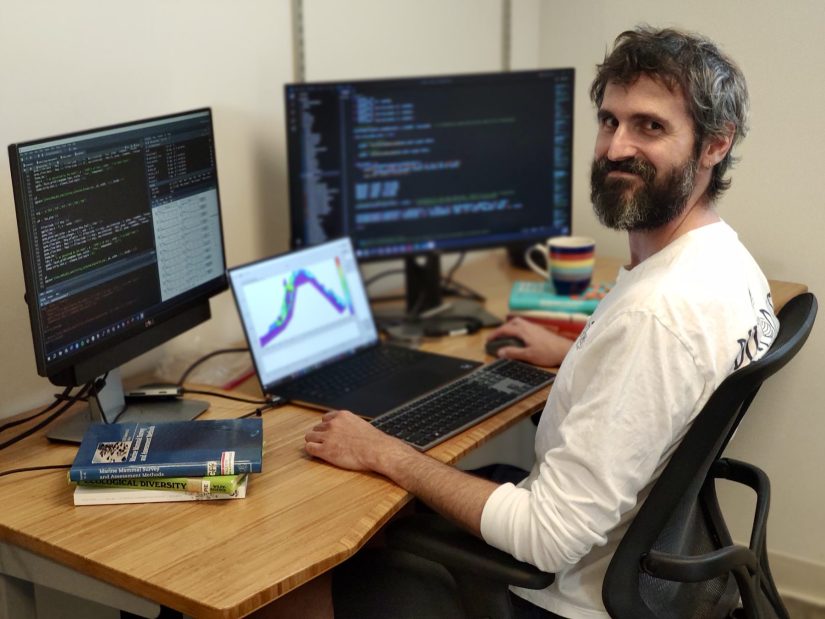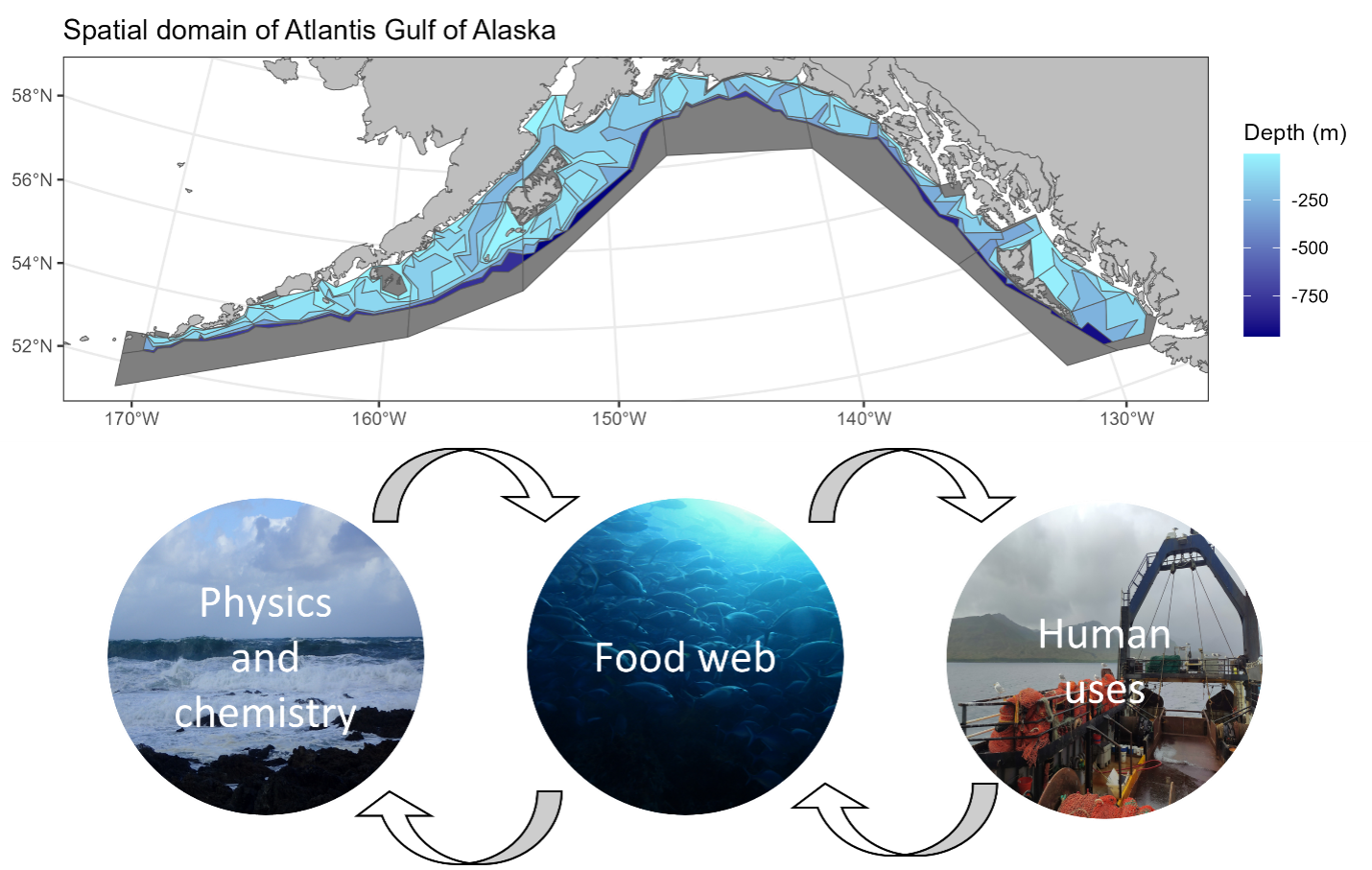Ecosystem modeling of the Gulf of Alaska for fisheries management
In a post-doc focused on modeling climate change effects in the Gulf of Alaska (GOA), Alberto Rovellini is part of the Punt Lab at SAFS. Beginning in 2020, Alberto’s work is on this area of Alaska which is facing big implications as a result of climate change, from negative economic implications for important fisheries to adverse ecological impacts on plankton, fish, mammals, and seabirds. It’s also one of the most productive marine ecosystems in the North Pacific, and this productivity supports high species diversity and valuable fisheries managed under state and federal jurisdictions.

The GOA ecosystem supports valuable and diverse marine fisheries, annually producing $1.3-2.1 billion dollars first wholesale value as well as supporting valuable recreational and subsistence fisheries. The majority of Alaska’s population resides in the GOA region, many living in isolated fishing-dependent communities.
The Punt Lab is focused on modeling and management. How can models of climate, ecosystems and fisheries help managers make decisions in these areas? Climate projections in the Gulf of Alaska point to continued future warming, and a high probability of repeated events such as ‘the blob’ in 2013-2017, a heatwave that dealt a huge blow to fisheries, with some not fully recovering for years.
Climate projections suggest events such as these will happen more frequently as temperatures continue to rise, and so Alberto’s work is to figure out what this entails for fisheries management in terms of adapting management frameworks, anticipate changes that are coming, and how this will translate for the communities that rely on commercial fisheries.

Extensive modeling research has already been conducted in Alaska, but a lot of focus has been on the Bering Sea region. Never before has this particular research using the Atlantis modeling framework been used in Alaska, or specifically for the Gulf of Alaska. This is where the Gulf of Alaska Climate Integrated Modeling Project (GOA-CLIM) comes in.
Alberto has been working on this project with partners, including NOAA Alaska Fisheries Science Center, to develop an ecosystem model for the Gulf of Alaska, and to use the model as a simulation tool aiming to capture all components of the ecosystem, from the physical properties to the food web and the fisheries, in a dynamic way. He describes the beauty of the model as one that allows them to explore how climate events can propagate through the ecosystem and affect the species that inhabit it, their interactions, and their availability to commercial fisheries. Being able to model various scenarios with different temperatures and a focus on different species, can generate information on climate impacts on different ecosystem components, and how these translate to impacts on human uses.

So where is the data-driven model at right now? Work to this point has focused on building the model and conducting technical validation. The team have used the model to run a theoretical scenario where the Gulf continues to heat up. In this scenario, food becomes limited from primary producers, i.e., those at the bottom of the food web, which would have important effects on fish species, including the commercial groundfish.
The next step is to apply the model to simulate real-world past and future climate scenarios. From simulating climate change and warmer water, and how fish species respond and how populations can adapt, this is part of the exciting work that brought Alberto to the Punt Lab and to research on the Gulf of Alaska.